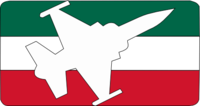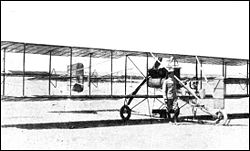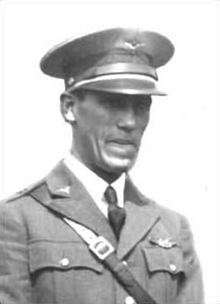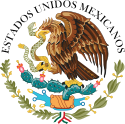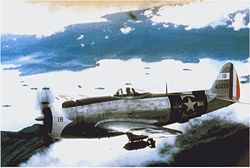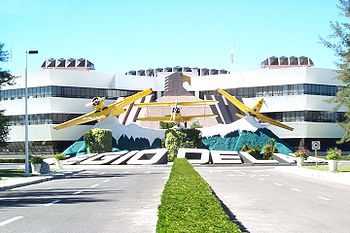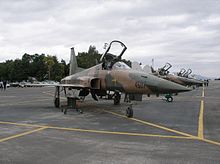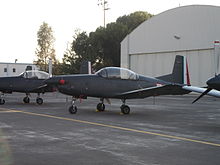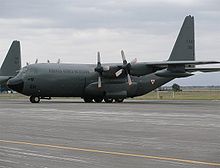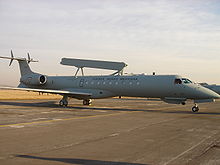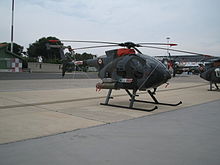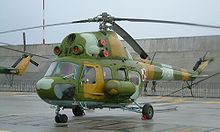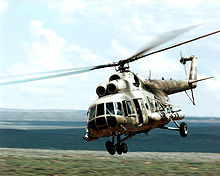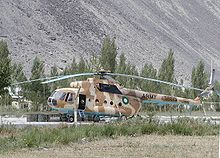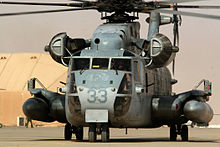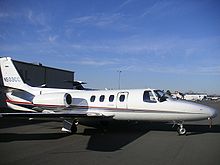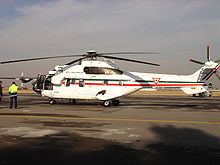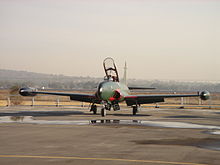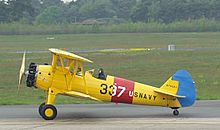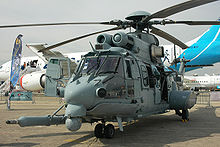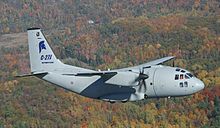- Mexican Air Force
-
Mexican Air Force
Fuerza Aérea Mexicana
Mexican Air Force SymbolFounded June 19, 1913 Country Mexico Allegiance Mexican Secretary of Defense Branch Mexican Army Type Air Force/Army Aviation Size 11,770 personnel
Aprox. 363 aircraft.[1]Motto Honor, valor & lealtad
"Honor, valor & loyalty"Colors Green, white & red Anniversaries February 10 Engagements Mexican Revolution, World War II, Chiapas Incident Commanders Current
commanderLeonardo Gonzáles García Insignia Roundel and Low Visibility Roundel 

Fin Flash 
Aircraft flown Attack PC-7, PC-9M Electronic
warfareEmbraer R-99, P-99 Fighter Northrop F-5 Freedom Fighter Interceptor Northrop F-5 Freedom Fighter Reconnaissance C-90A King Air, Sabreliner 75A, Fairchild C-26, 727–200, Trainer PC-7, PC-9M Transport Arava, 727–200, C-130 The Mexican Air Force (Fuerza Aérea Mexicana or FAM) is the aviation branch of the Mexican Army and depends on the National Defense Secretariat (SEDENA). Since 2008, its commander is Gen. Leonardo Gonzáles García.[2]
Contents
History
Revolution
The official predecessor of the Air Force was the Army's Auxiliary Aerial Militia Squadron (Escuadrilla Aérea de la Milicia Auxiliar del Ejército), created during the Mexican Revolution in April 1913 by the Secretary of War and Navy General Manuel Mondragón, who authorized pilots Miguel Lebrija and Juan Guillermo Villasana to bomb targets on Campo de Balbuena, in Mexico City.
On February 5, 1915, the leader of the Constitutionalist Army, Venustiano Carranza, founded the Arma de Aviación Militar (Military Aviation Arm), which would become the current air force. Its first commander was Lt. Alberto Salinas Carranza.[3]
In 1925, due to the shortage of airplanes caused by World War I, Mexico set up the National Aviation Workshops (TNCA) to design and build its own airplanes and aeroengines. When U.S. Colonel Ralph O'Neill was hired to revamp the Mexican Air Force in 1920, he reported to General Plutarco Elías Calles that most of the aircraft available had to be replaced since they were obsolete and worn away. Therefore, Mexico acquired some British Avro 504K and Avro 504J airplanes, which later would be made in Mexico with the name Avro Anáhuac. In addition, in May 1920, Mexico acquired thirteen twin-engine bombers Farman F.50.[4]
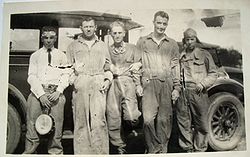 Alfredo Lezama Alvarez, Unknown pilot, Luis Farell; on the far right is Eliseo Martín del Campo. Mid-late 1920s.
Alfredo Lezama Alvarez, Unknown pilot, Luis Farell; on the far right is Eliseo Martín del Campo. Mid-late 1920s.
Between the years 1923 and 1929, Mexico found itself immersed in a wave of violent territorial, religious and military armed rebellions, which required the Air Force to quickly deploy its forces and provide air support wherever the federal army requested them. Some of these conflicts, that were decided mostly by the assertive use of the Air Force, are mentioned below.
On December 7, 1923, former President Adolfo de la Huerta launched a military coup (delahuertista rebellion) against the government of President Álvaro Obregón. The situation was extremely critical, because along with de la Huerta, about 60% of the army revolted, including various high-ranking generals across the country. The power tilted back in favor of the federal forces when the United States agreed to furnish the Mexican government with a fleet of new de Havilland DH-4B aircraft equipped with the Liberty motor, armed with Lewis and Vickers machine guns and able to carry bombs. The military coup was then suffocated by February 1924.
A territorial war was that of the Sonora Yaqui Indians who demanded by force that previous territorial treaties were implemented. The conflict lasted from 1926 to 1927, and it came to an end when a new treaty was implemented.
When President Plutarco Elías Calles pushed for the creation of the ‘Mexican Apostolic Catholic Church’, independent of Rome, it unleashed a widespread religious war known as the Cristero War. This long civil war lasted from 1926 to 1929.
In May 1927, while General Obregón seemed keen to impose the presidency to General Calles, General Arnulfo R. Gómez launched a military coup against both Obregón and Calles. His command posts were located in the cities of Puebla and Veracruz, where he led approximately 200 federal deserters, ammunition and weapons. The air force played a key role in their defeat.
Military of Mexico Components Mexican Air Force Mexican Army Mexican Navy Ranks Air Force ranks and insignia Army ranks and insignia Navy ranks and insignia History Military History of Mexico Awards Military decorations of Mexico Then, on March 3, 1929, a serious military coup took place, led by General José Gonzalo Escobar and heeded by various other generals. In these days, the air force's remaining airplanes consisted of worn and shot Bristol F.2 Fighter, Bristol Boarhound, de Havilland DH-4B and Douglas O-2C, a force that was not suitable to defeat Escobar's power.[5][6] In this context, the Mexican government convinced the U.S. government to promote the peace south of its border and quickly make available twelve new OU-2M Corsair with the 400 hp Wasp engine, nine Douglas O-2M, four Stearman C3B and six Waco Taper Wings. Only two weeks after making the request, the U.S. government agreed, and several Mexican pilots travelled to Brownsville, Texas, and New York to pick up the new aircraft. The key victory was decided in late March 1929 at the Battle of Jiménez, Chihuahua, where after several days of air raids, Escobar was defeated by General Calles, taking about 6000 prisoners.[7] This rebellion was quite serious, since a third of the officials and nearly 30,000 soldiers rebelled; in two months, more than 2000 men had been killed.
In May 1938, the Governor of San Luis Potosí, General Saturnino Cedillo, declared himself in rebellion and President Lázaro Cárdenas travelled there to personally mount the campaign against the revolt. The Air Force organized a mixed fleet of 17 aircraft that included some new V-99M Corsair, engaging the enemy assertively when spotted. Cedillo quickly realized he had no chance in open fields against the air force and ran to the Huasteca Hills, where his men dispersed, abandoning him.[8]
With the imminent collapse of the Spanish Republic in 1939, the Mexican government took delivery of military aircraft destined for the Republic, strengthening its arsenal.
World War II
The Escuadrón 201, a P-47D fighter squadron of the Fuerza Aérea Expedicionaria Mexicana (Mexican Expeditionary Air Force), served in the Pacific against Japan during World War II. It consisted of 25 aircraft and had 300 airmen and supporting staff. The 201 Squadron completed 96 combat missions over the Philippines and Formosa, now called Taiwan. It is the only unit of the Mexican armed forces ever to see overseas combat.[9]
Chiapas conflict
On January 1, 1994, the day the North American Free Trade Agreement (NAFTA) came into effect, hundreds of guerrillas from the previously unknown Zapatista Army of National Liberation (EZLN) occupied several towns and cities in the southern state of Chiapas.
The FAM was mobilized to support Army units, sending almost every available helicopter to the territory of operations. Units involved included the recently formed 214th and 215th Special Operations Squadrons, equipped with a mix of Bell 212 assault- and MD.530F scout helicopters. Up to 40 helicopters were deployed to support an initial deployment of 10,000 ground troops.
Bell 212s were armed in two configurations: for fire support with twin MAG 7.62-mm gun pods and cabin-mounted GPMGs; or as gunship, with LAU-32 70-mm rocket launchers, a twin MAG gun-pod and cabin mounted MAG GPMGs.
Pumas, Bell 205s, 206s and 212s from the 209th were also deployed, however, FAM's helicopter assets were scarce and the Mexican Army had to rely on almost every other government agency's helicopters for general support tasks. Almost any flyable aircraft from the National Attorney's Office (PGR) was also deployed, including Bell 206s and 212s, as well as the Navy's recently acquired Mi-8MTV-1s. Eventually the Army deployed some 70,000 ground troops and air support proved to be insufficient; hence the decision was taken to considerably expand the FAM's helicopter fleet.
By December 1994, FAM had bought additional 12 armed MD.530MG 'Defender' and four UH-60L Blackhawk helicopters,[10] which it grouped into the 216th Special Operations Squadron. This unit was the spearhead of operation "Arco Iris" (Rainbow) to re-take several towns that had fallen under rebel control in January 1994. The new militarized Defenders came armed with M2AC machine-guns and LAU-68A 70-mm rocket launchers. Three additional units were ordered in 1996 and delivered as attrition replacements in March 1998. Black Hawks wore 1191 to 1194 serials and are being used for special operations.
Although the FAM received 18 surplus Bell 206s from the Attorney General's office (PGR) in the mid-1990s, the main need identified by the FAM High Command was for a new fleet of transport helicopters that would allow it to support the Army with an adequate airlift capability.[11]
Structure
A national commander under the orders of the Secretary of National Defense is in charge of the Mexican Air Force. The second-in-command is the Air Force Chief of Staff, who supervises a Deputy Chief of Operations and a Deputy Chief of Management. The Air Force divides the country's territory into four regions: Northwestern (Mexicali, Baja California), Northeastern (Chihuahua, Chihuahua), Central (Mexico City) and Southeastern (Tuxtla Gutiérrez, Chiapas); each region is commanded by a general. The regional headquarters are in charge of 18 air bases across the country:
Northwest Air RegionMilitary Air Base Air Group Unit Aircraft 3rd Military Air Base – El Cipres, Baja California 5th 106 Air Squadron Cessna 182, Cessna 206 9th Military Air Base – La Paz, Baja California Sur 2nd 203 Air Squadron Pilatus PC-7 10th Military Air Base – Culiacán, Sinaloa 4th Maintenance Center Bell 206, Cessna 206 12th Military Air Base – Tijuana, Baja California N/A N/A N/A 18th Military Air Base – Hermosillo, Sonora 3rd
5th3rd Aerial Surveillance Squadron
107thC-26 Metroliner, Pilatus PC-6 R/P-99
Cessna 182
Northeast Air RegionMilitary Air Base Air Group Unit Aircraft 11th Military Air Base – Santa Gertrudis, Chihuahua Air Force Airtactics Military School (EMAATFA) N/A Pilatus PC-7 13th Military Air Base – Chihuahua, Chihuahua 5th 110th Cessna 182 14th Military Air Base – Monterrey, Nuevo León 4th
5th102nd
108thBell 206 Bell 212
Cessna 182 Cessna 206Air Bases
 A Mexican Air Force F-5
A Mexican Air Force F-5
1 Santa Lucía, Estado de Mexico 10 Culiacán, Sinaloa 2 Ixtepec, Oaxaca 11 Santa Gertrudis, Chihuahua 3 El Ciprés, Baja California 12 Tijuana, Baja California 4 Cozumel, Quintana Roo 13 Chihuahua, Chihuahua 5 Zapopan, Jalisco 14 Escobedo, Nuevo León 6 Tuxtla Gutiérrez, Chiapas 15 San Juan Bautista la Raya, Oaxaca 7 Pie de la Cuesta, Guerrero 16 Ciudad Pemex, Tabasco 8 Mérida, Yucatán 17 Copalar, Chiapas 9 La Paz, Baja California Sur 18 Hermosillo, Sonora 1st Military Air Station – Mexico City International Airport
- General Coordination of the Presidential Air Transport Unit (CGTAP)
- High Command Special Air Transport Unit (UETAAM) – operating UH-60 Black Hawk, SA 330J, JetStar, IAI 201, Beechcraft Super King Air, Boeing 737
1st Military Air Base – Santa Lucia, State of Mexico
- 1st Air Group
- 3rd Air Group
- 301 Air Squadron – operating IAI 101B/102/201, C-295
- 302 Air Squadron – operating C-130 Hercules, L100-30, Boeing 727
- 303 Air Squadron – operating Mi-8T/MTV-1
- 502 Air Squadron – operating Beech 90, Cessna 402, Cessna 182, Cessna 500, Cessna 206, Cessna 210, RC690/695
- Aerial Surveillance Squadron – operating C-26 Metroliner, SA2-37B, R/P-99
2nd Military Air Base – Ixtepec, Oaxaca
- 1st Air Group
- 402 Air Squadron – Pilatus PC-7
3rd Military Air Base – El Cipres, Baja California
- 5th Air Group
- 106 Air Squadron – Cessna 182
4th Military Air Base – Cozumel, Quintana Roo
- 2nd Air Group
- 201 Air Squadron – Pilatus PC-7
5th Military Air Base – Zapopan, Jalisco
- 5th Air Group
- 105 Air Squadron – operating Cessna 182, Cessna 206
- 111 Air Squadron – operating Bell 206, Bell 212
- Air College
- Preparatory Squadron – operating Beech F33C
- Primary Squadron – operating Aermacchi SF.260
- Advanced Squadron – Pilatus PC-7
6th Military Air Base – Teran, Chiapas
- 2nd Air Group
- 202 Air Squadron – operating Pilatus PC-7, Pilatus PC-9M
7th Military Air Base – Pie de la Cuesta, Guerrero
- 5th Air Group
- 2nd Air Group
- 204 Air Squadron – operating Pilatus PC-7
8th Military Air Base – Mérida, Yucatán
- 5th Air Group
- 104 Air Squadron – operating Bell 206, Bell 212, CH-53D Yas'ur, Cessna 210
9th Military Air Base – La Paz, Baja California Sur
- 2nd Air Group
- 203 Air Squadron – Pilatus PC-7
10th Military Air Base – Culiacán, Sinaloa
- 5th Air Group
- 109 Air Squadron – Cessna 182
11th Military Air Base – Santa Gertrudis, Chihuahua
- Military School of Applied Airtactics of the Air Force (EMAATFA) – operating Pilatus PC-7
13th Military Air Base – Chihuahua, Chihuahua
- 5th Air Group
- 110 Air Squadron – operating Cessna 182
14th Military Air Base – Monterrey, Nuevo Leon
- 5th Air Group
- 108 Air Squadron – operating Cessna 182
15th Military Air Base – Oaxaca, Oaxaca
- 5th Air Group
- 103 Air Squadron – operating Bell 212
18th Military Air Base – Hermosillo, Sonora
- 5th Air Group
- 107 Air Squadron – operating Cessna 182, Pilatus PC-6
Ranks
Air Force ranks are the same as in Mexico's Army, with the exception of generals.[13]
Rank Insignia General de División – Divisional General 
General de Ala – Wing General 
General de Grupo – Group General 
Coronel – Colonel 
Teniente Coronel – Lieutenant Colonel 
Rank Insignia Mayor – Major Capitán Primero -
First Captain
Capitán Segundo -
Second Captain
Teniente – Lieutenant 
Subteniente – Sub-lieutenant 
Rank Insignia Sargento Primero – First Sergeant 
Sargento Segundo – Second Sergeant 
Cabo – Corporal 
Soldado de Primera – Soldier First Class 
Soldado – Soldier 
Pilot selection and training
The FAM offers higher education, middle education, technical training, tactical training and specialized technical training in its various campuses:
Air College
Since the National School of Aviation was opened in 1915, it took different names over the years until finally, in 1959 it joined the military school of meteorology, mechanics and aviation specialists, forming the leading campus in military aviation education: 'El Colegio del Aire' (Air College), which since September 9, 1959, has guided the formation of Air Force officers.[14] The Air Force Academy is an all academic institution of the Mexican Air Force and comprises four schools: 'Military Aviation School', 'Maintenance and Supply Military School', 'Air Force Military Specialist School', and the 'Military Troops' Air Force Speciaslist School'.[15]
- Military Aviation School (EMA)
Admission to the Air Force is through the mechanism of military recruitment that takes place every year at The Ministry of Defense. The FAM currently offers tertiary level studies – highlighting that of Military Pilot, which spans 4 years at the facilities of the 'College of the Air' located on the Military Air Base No. 5.
The subjects taught in pilot training include: tactics of the branches of aviation, general aviation tactics, meteorology, air navigation, air traffic control, radio communications and culture in general, along with approximately 250 hours of flight. During the first year, the training is theoretical. During the second year, Beechcraft Bonanza aircraft are used for flight instruction. During the third the cadets are trained Aermacchi SF260EU for aerobatics, and later on Pilatus PC-7 for advanced flight tactics, including combat. Within each of these stages, the cadets are trained in aerial acrobatics, stage tactical instrument flight, visual flying rules (VFR), radio operations, among others, which increase in complexity as the cadets' training progresses.[16] The first female aviator to graduate as a pilot in the history of FAM, Andrea Cruz, became a cadet at the Military Aviation School in 2007.
- Military Air Force Specialist School (EMEFA);
Military School of Air Force Specialist offers a comprehensive scholarship lasting three years for officer training meteorologists and flight control, obtaining at the graduate level of lieutenant. His duties are to provide meteorological information and control of military or civil aircraft.[17]
- School of the Air Force Special Forces (EMTEFA)
Military School of special troops of the Air Force is a establishment of military education that has as its mission to train sergeants in seconds aviation maintenance, supply lines, electronic aviation and military aviation. The school is located in the St. Lucía military base.[18]
- Military School of Maintenance and Supply (EMMA)
In this school, officers are trained as aviation maintenance specialists, aviation electronics specialists, weapons and air supply lines.[19]
Recruitment
To enter any of the campuses of the Air Force, SEDENA convenes a competitive entrance examination which is held each year. The requirements are:
- Mexican citizenship and have no other nationality
- Be the son of Mexican born parents
- Minimum age of 15 years old at December 31 of the year in course
- Maximum age of 20 years old at December 31 of the year in course
- Have completed high school or equivalent
- Minimum height of 1.65 m
In order to be admitted to any school of the Mexican Air Force Academy mentioned above, the applicant should also perform the following tests: physical, medical, cultural, and aviation psychology. In some cases, the psychological aeromedical 2nd level examination may also be required.[20]
Fleet
See also: Mexican Naval AviationMexico has the second largest defense budget in Latin America, spending about 0.5% GDP on its military.[21] Because of the ongoing Mexican Drug War, increasing importance has been placed on acquiring airborne surveillance platforms, light aircraft, helicopters and rapid troop transport.[22]
The Air Force fleet is estimated to be at 241 fixed-wing aircraft and 117 helicopters:[1]
Class Aircraft Model In service Origin Image Combat & interception jets Northrop F-5 Freedom Fighter F-5E
F-5F8
2 United States
United StatesClose support airplanes Pilatus PC-7
PC-9M60
1 Switzerland
SwitzerlandTransport airplanes C-130 A/E/MK1/MK3/L382G
Hercules7  United States
United StatesEADS CASA C-295 4[23]  Spain
SpainBoeing 727–200 4  United States
United StatesArava IAI-201 11  Israel
IsraelReconnaissance airplanes Beechcraft C-90A King Air 4  United States
United StatesRockwell Sabreliner 75A 5  United States
United StatesEmbraer R-99
P-991
2 Brazil
BrazilFairchild C-26 Metroliner III 4  United States
United StatesSchweizer SA2-37A 1  United States
United StatesCessna 182 Skylane 70  United States
United StatesMaule Air M-7-235
MXT-7-1806
21 United States
United StatesPilatus PC-6 4  Switzerland
SwitzerlandTraining airplanes Aermacchi SF-260 27  Italy
ItalyBeechcraft F-33C Bonanza 29  United States
United StatesCombat helicopters Sikorsky UH-60 Black Hawk 6 MD Helicopters 530F 20 Transport helicopters Mil Mil Mi-2
Mil Mi-8
Mil Mi-174
8
19 Russia
Russia
Sikorsky CH-53D Yas'ur 4  United States
United States
 Israel
IsraelBell 412
412EP4
7 United States
United StatesTraining helicopters 205
206B1
2Reconnaissance helicopters 205
2061
4VIP airplanes Boeing 757–225
737–3001
2Cessna Citation 500 1 Lockheed Jetstar 1 Grumman G-2 1 Learjet 35A 1 Aero Commander 69-5A Turbo 1 VIP helicopters Eurocopter Puma
Super Puma2
5 France
FranceAircraft recently retired Lockheed T-33 Shooting Star 15  United States
United StatesMil Mil Mi-26 1  Russia
RussiaRetired and still functional Stearman PT-17 Kaydet 3  United States
United StatesRecent acquisitions
Class Maker Model In order Origin Image Transport helicopters Eurocopter EC-725 Cougar 12[24][25]  France
FranceTransport airplanes Alenia Aeronautica C-27J Spartan 4[26]  Italy
ItalySee also
References
- ^ a b "Mexico Air Force". Scramble.nl. http://www.scramble.nl/mx.htm.
- ^ Comandante de la Fuerza Aérea Mexicana.
- ^ Los Orígenes
- ^ "Post-WWII Highlights in Latin American Aviation History". Smithsonian Center for Education and Museum Studies. http://www.smithsonianeducation.org/scitech/impacto/graphic/aviation/postwwii.html.
- ^ Davila Cornejo, Hector (May 10, 2003). "The Azcarate Corsair". The Latin American Aviation Historical Society. http://www.laahs.com/artman/publish/article_12.shtml. Retrieved March 22, 2009.[dead link]
- ^ Davila Cornejo, Hector. "Los Corsarios Mexicanos" (in Spanish). Sistema Informativo Aeronáutico Latinoamericano. http://portalaviacion.vuela.com.mx/articulos/corsarios.html. Retrieved March 22, 2009.
- ^ External links to the battle at Jiménez, Chihuahua, on 1929:[1], [2], [3]
- ^ Time magazine. June 6, 1938.
- ^ Klemen, L. "201st Mexican Fighter Squadron". The Netherlands East Indies 1941–1942. http://www.dutcheastindies.webs.com/201squadron.html.201st Mexican Fighter Squadron
- ^ Summary of US Military Involvement in Chiapas,Mexico
- ^ Guevara, Inigo (April 13, 2005). "Central and Latin America Database". Aztec Rotors. http://www.acig.org/artman/publish/article_529.shtml. Retrieved May 20, 2009.
- ^ http://www.noroeste.com.mx/publicaciones.php?id=702910
- ^ Ranks
- ^ Douglas, Lawrence; Taylor Hansen (2006). "Los orígenes de la Fuerza Aérea Mexicana 1913 -1915" (in Spanish). Universidad Autonoma del Estado de Mexico. http://redalyc.uaemex.mx/redalyc/src/inicio/ArtPdfRed.jsp?iCve=60056104. Retrieved March 22, 2009.
- ^ "Adiestramiento y Capacitación" (in Spanish). Secretaria de la Defensa Nacional. 2009. http://www.sedena.gob.mx/index.php?id=4. Retrieved March 22, 2009.
- ^ "Escuela Militar de Aviación" (in Spanish). Secretaria de la Defensa Nacional. March 2009. http://www.sedena.gob.mx/index.php?id_art=898. Retrieved March 22, 2009.
- ^ "Escuela Militar de Especialistas de la Fuerza Aerea" (in Spanish). Secretaria de la Defensa Nacional. 2009. http://www.sedena.gob.mx/index.php?id=326. Retrieved March 22, 2009.
- ^ "Escuela Militar de Tropas Especialistas de la Fuerza Aerea" (in Spanish). Secretaria de la Defensa Nacional. 2009. http://www.sedena.gob.mx/index.php?id=402. Retrieved March 22, 2009.
- ^ "Escuela Militar de Mantenimiento y Abastecimiento." (in Spanish). Secretaria de la Defensa Nacional. 2009. http://www.sedena.gob.mx/index.php?id_art=901. Retrieved March 22, 2009.
- ^ "Admisión 2009 a Planteles Militares" (in Spanish). Secretaria de la Defensa Nacional. 2009. http://www.sedena.gob.mx/index.php?id_art=474. Retrieved March 22, 2009.
- ^ "The World Factbook – Mexico". Central Intelligence Agency. https://www.cia.gov/library/publications/the-world-factbook/geos/mx.html.
- ^ Jordi Díez; Ian Nicholls (January 2006), The Mexican Armed Forces in Transition, Strategic Studies Institute, http://www.strategicstudiesinstitute.army.mil/pdffiles/pub638.pdf
- ^ http://www.modocharlie.com/2010/06/primer-c295-para-la-fam/
- ^ "Mexico Orders 6 EC725 Helicopters". DefenseIndustryDaily.com. May 6, 2009. http://www.defenseindustrydaily.com/Mexico-Orders-6-EC725-Helicopters-05327/.
- ^ "The Mexican Ministry of Defense Orders 6 EC725 Helicopters from Eurocopter" (Press release). Eurocopter. http://www.eurocopter.com/site/FO/scripts/myFO_publication.php?news_id=595&lang=EN.
- ^ Finmeccanica: around USD 200 million contract with Mexico for four C-27J aircraft Rome, July 6, 2011
External links
- History of the Mexican Air Force (in Spanish).
- Planes and helicopters of the Mexican Air Force (in Spanish).
Mexican Drug War (2006–present) (Names in italics represent dead or arrested individuals)Federal forces Mexican Army • Mexican Air Force • Mexican Navy • GAFE • Federal Investigations Agency • SIEDO • Federal PoliceBeltrán-Leyva Cartel
(Extinct in 2010)FoundersArturo Beltrán Leyva • Alfredo Beltrán Leyva • Carlos Beltrán Leyva • Edgar Valdez Villarreal • Sergio Villarreal Barragán • Héctor Beltrán LeyvaLa Familia Cartel
(Extinct in mid-2011)FoundersNazario Moreno González • Carlos Rosales Mendoza • Arnoldo Rueda Medina • Dionicio Loya Plancarte • Rafael Cedeño Hernández • Alberto Espinoza Barrón • Enrique Plancarte Solís • José de Jesús Méndez Vargas • Servando Gómez MartínezGulf Cartel FoundersLeadersOsiel Cárdenas Guillén • Antonio Cárdenas Guillén • Jorge Eduardo CostillaJuárez Cartel
(Armed wing: La Línea)FoundersRafael Aguilar Guajardo • Pablo Acosta Villarreal • Amado Carrillo FuentesLeadersVicente Carrillo Fuentes • José Luis FratelloKnights Templar Cartel
(Armed wing: La Resistencia)FoundersEnrique Plancarte Solís • Servando Gómez MartínezLeadersEnrique Plancarte Solís • Servando Gómez MartínezSinaloa Cartel
(Armed wing: Gente Nueva)FoundersLeadersTijuana Cartel FoundersRamón Arellano Félix • Benjamín Arellano Félix • Francisco Rafael Arellano Félix • Carlos Arellano Félix • Eduardo Arellano Félix • Francisco Javier Arellano FélixLeadersEnedina Arellano Félix • Luis Fernando Sánchez Arellano • Edgardo Leyva EscandonLos Zetas Cartel FoundersArturo Guzmán Decena • Jaime González Durán • Jesús Enrique Rejón Aguilar • Heriberto LazcanoLeadersHeriberto Lazcano • Miguel Treviño MoralesSee also Other cartelsEarly drug lordsSome corrupt officialsJesús Gutiérrez Rebollo • Victor Gerardo Garay Cadena • Arturo Durazo Moreno • Noé Ramírez Mandujano • Ricardo Gutiérrez Vargas • Rodolfo de la Guardia García • Francisco Navarro Espinoza • Raúl Salinas de Gortari • Julio César Godoy ToscanoOperationsMérida Initiative • Project Gunrunner • Project Coronado • Operation Solare • Operation Xcellerator • Operation Michoacan • Operation Baja California • Operation Sinaloa • Joint Operation Nuevo Leon-Tamaulipas • Operation Chihuahua • Operation Quintana RooVehiclesVariousTimeline of the Mexican Drug War • Édgar Eusebio Millán Gómez • Enrique Camarena • Jaime Jorge Zapata • War on Drugs • House of Death • Piracy in Falcon Lake • List of massacres in Mexico • Most wanted Mexican drug lords • Blog del Narco
Wikimedia Foundation. 2010.

